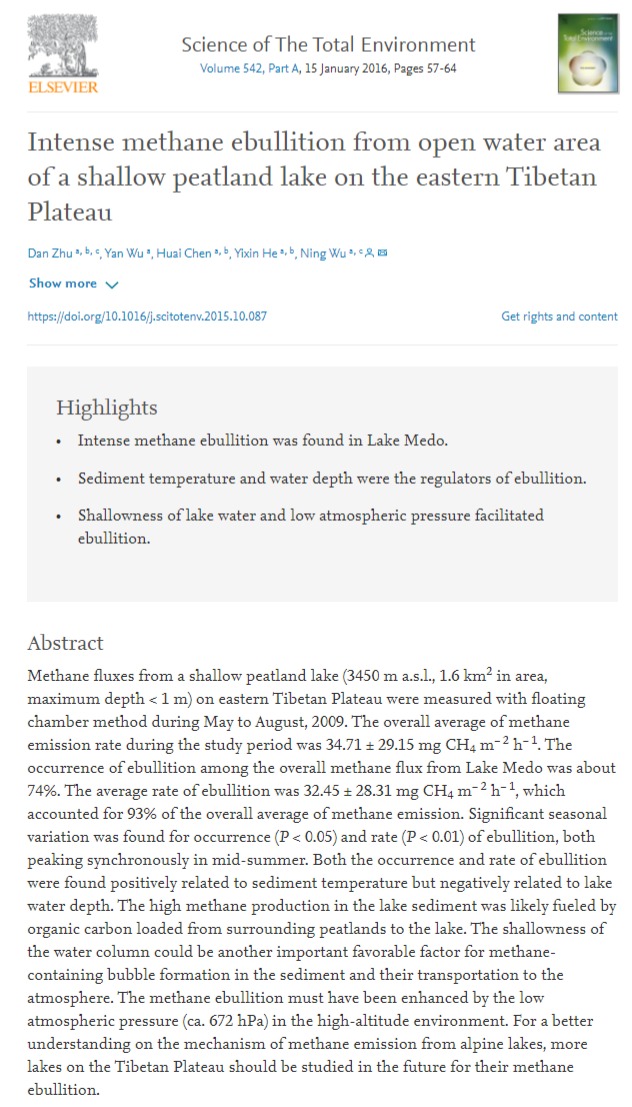
Methane fluxes from a shallow peatland lake (3450 m a.s.l., 1.6 km2 in area, maximum depth < 1 m) on eastern Tibetan Plateau were measured with floating chamber method during May to August, 2009. The overall average of methane emission rate during the study period was 34.71 ± 29.15 mg CH4 m− 2 h− 1. The occurrence of ebullition among the overall methane flux from Lake Medo was about 74%. The average rate of ebullition was 32.45 ± 28.31 mg CH4 m− 2 h− 1, which accounted for 93% of the overall average of methane emission. Significant seasonal variation was found for occurrence (P < 0.05) and rate (P < 0.01) of ebullition, both peaking synchronously in mid-summer. Both the occurrence and rate of ebullition were found positively related to sediment temperature but negatively related to lake water depth. The high methane production in the lake sediment was likely fueled by organic carbon loaded from surrounding peatlands to the lake. The shallowness of the water column could be another important favorable factor for methane-containing bubble formation in the sediment and their transportation to the atmosphere. The methane ebullition must have been enhanced by the low atmospheric pressure (ca. 672 hPa) in the high-altitude environment. For a better understanding on the mechanism of methane emission from alpine lakes, more lakes on the Tibetan Plateau should be studied in the future for their methane ebullition.